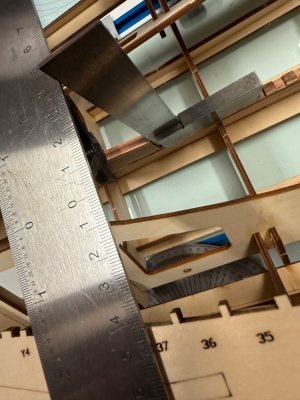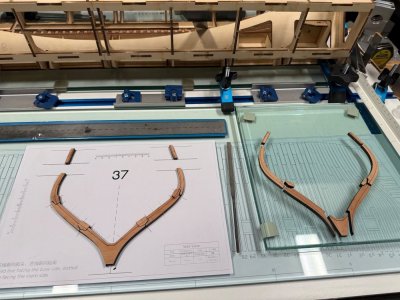Very good question..
great ? minds think alike..
Essentially, the keel needs to be positioned in a stern to bow direction on the jig so that the frame positions on the keel correspond exactly, perpendicular, to the keel (for non-canted frames) in line with the slots for each numbered frame on top of the jig.
Here's what I am going to do: Find the location of a clearly identifiable midship frame on the keel, and looking straight down see how well it corresponds to the position of the frame on the jig for that frame-thankfully the location of the frame on the upper part of the jig is laser printed. I'll use a drafting T rule to do this (will show in a picture).
The picture shows that frame 37, the last midship frame, according to the plan, abuts the stern deadwood. The T ruler is positioned on the jig right on the slot for the posterior edge of frame 37. The 90 degree weighted square shows that the frame position on the keel corresponds'plumb exact to its position on the jig.
I am therefore leaving the keel exactly where it is !
View attachment 513504
Should work
Alex R










